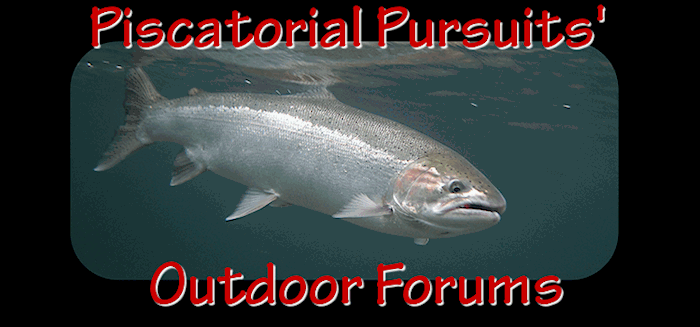That Puget Sound and OP steelhead have different numbers of chromosome pairs was news to me too, but there were 3 or 4 people in attendance that knew this. Two of those people are geneticists, and according to them it is not uncommon for geographically isolated members of the same species to have different numbers of chromosome pairs. The genetics experts said that OP and Puget Sound stocks can interbreed.
But that wasn't the point of Jennifer McLean's presentation. The big news was that, FOR THE VERY FIRST TIME, someone is actually studying what happens when you open a steelhead hatchery on a stream with wild fish. WDFW opened Forks Creek hatchery (trib to the Willapa River) in the early 1990s, planted their first smolts in 1994, and started getting adult returns in 1996. In 1996, they put 90 hatchery hens (and about that many hatchery bucks) above the weir, and counted 11 wild hens (not sure how many bucks) going past the weir. From these spawners, Jennifer and her coworkers are using DNA fingerprinting to keep track of smolts per spawner (freshwater production) and recruits per spawner (total production) for both hatchery and wild fish. The weir allows them to sample all the fish (they clip a small piece off the tail of smolts and adults), and the DNA analysis allows them to determine each fish's family tree.
For the 1996 spawners, the wild hens produced an average of 3.6 adults in the next generation; the hatchery hens produced 0.4 adults per hen. For the 1997 spawners, each hatchery hen produced 0.2 adults on average, each wild hen produced 6.9 adults in the next generation (2001 returns). The bottom line seems to be that first generation hatchery fish are very ill-suited to reproduce in the wild, at least in Forks creek. What would be great to know is what happens in subsequent generations. Because natural spawners in that system typically have a 4 year lifecycle, the 2nd generation of hatchery origin spawners (from 1996 grandparents) aren't due to return until 2004.
Most of this work is not yet published, but it will be in the peer-reviewed Canadian Journal of Fisheries and Aquatic Sciences sometime soon.
It's hard to believe that this kind of research hasn't been done before. It cannot really be replicated in Washington state now that virtually every river has been planted with hatchery fish for decades.













 Previous Topic
Previous Topic Index
Index



